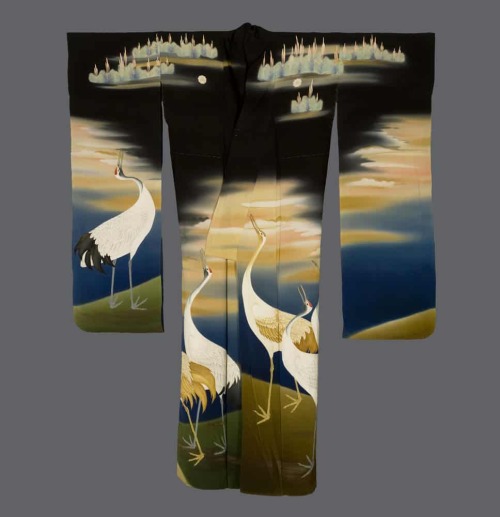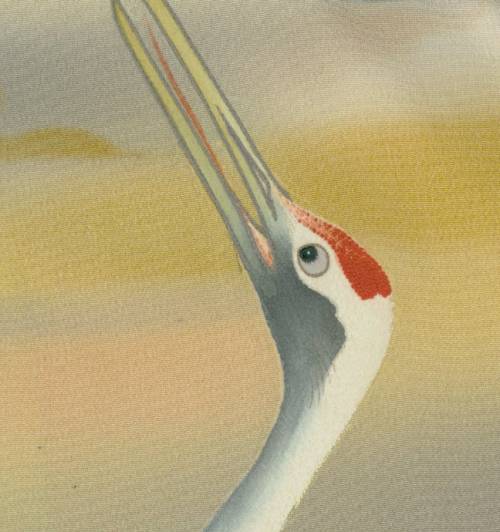thekimonogallery:Taisho Furisode. Taisho period (1912-1926), Japan. The Kimono Gallery. An unusual
thekimonogallery:Taisho Furisode. Taisho period (1912-1926), Japan. The Kimono Gallery. An unusual kinsha (fine crepe) silk furisodefeaturing six standing cranes created with yuzen resist dyeing, with simple andsagara embroidered highlights. Five mon (family crests), so the most formal offurisode. This is the outer furisode of a 3-piece kasane set. What sets thiskimono apart are: the large size of the standing cranes, and the fact that fiveout of the six cranes have their heads pointed skywards, an unusual directionthat the artist has taken that imparts added spirituality and impact to thekimono canvas. Also unusual for a furisode is that the main impact of theartwork is found on the front of the kimono. The Japanese regard the whitecrane as the premier symbol of longevity and good fortune. Kimono multilayersets - called “kasane” - were popular among the Japanese aristocracyduring the Heian period of a thousand years ago. Over the past few centuries,until the end of the Taisho period, such three-kimono sets were sometimescommissioned by the premier kimono artists by wealthier families.Traditionally, the outer kimono was black in color, the next kimono red, withthe innermost white. The contrasting colors were only visible at the end of thesleeves, at the neck, and at times a little at the hem. This example is theblack outer furisode of the set, referred to as “uwagi”, is the onethat contained most of the embroidery details and extra attention. This outerwas created to be a little larger in size than the two inner layers, presumablyto be sure that the inner layers were well-covered. The red middle furisode isreferred to as the “first shitagi”, and the white inner one the“second shitagi” -- source link
Tumblr Blog : thekimonogallery.tumblr.com

